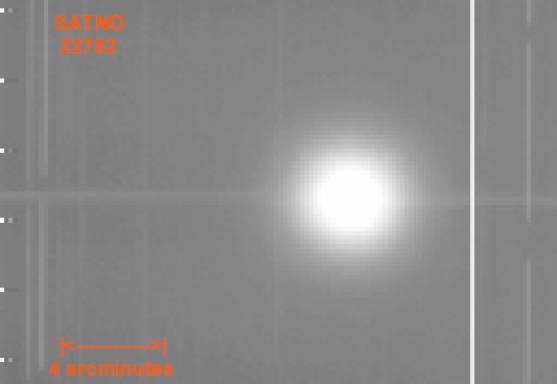NASA-LMT: Orbital
Object Detection via CCD Drift-Matching Mode
A demonstration of the detection of
an orbiting object via the drift-matching mode of CCD operation.
The CCD has been set such that its
read direction and read rate exactly match the orbital parameters
of a catalogued object. In this
example, the object is Satellite Number 22782 which is a piece of Meteor
2-21 debris with a RCS derived
diameter of 6.28 m. When crossing through the LMT FOV, the object
was at an altitude of 949 km with an
angular velocity of 0.446 degrees/sec, a position angle of motion of
265 degrees and a solar phase angle
of 69 degrees. The CCD was oriented accordingly and then read
at the corresponding rate. The object
signal photons were then able to accumulate on only several pixels,
neglecting the obvious saturation,
rather than streak through the FOV. The vertical streaks are background
stars which are virtually stationary
at this high read rate and short effective exposure time of 0.765 seconds.
Based upon the approximate net flux
above background of 2.5 million ADU (compensating for the saturation),
coupled with the assumption of a 0.1
albedo and a specular phase function, the object optical cross-section
(OCS) based diameter is approximately
2.02 m. This white light image was acquired with the LSP 2K CCD
with 16x16 binning in order to
accommodate the high angular rate and consequent short readout time.
